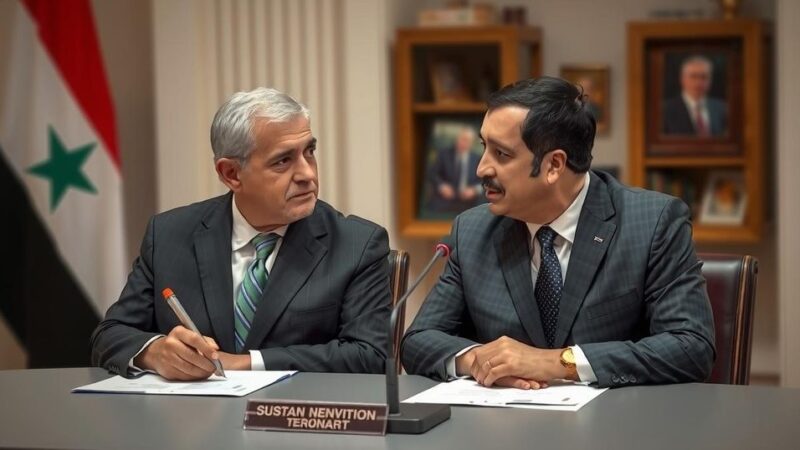Lebanon’s Foreign Minister Abdallah Bou Habib claimed that Hassan Nasrallah and Israeli Prime Minister Benjamin Netanyahu had agreed to a ceasefire before Nasrallah was killed in an airstrike. Despite initial agreements, Netanyahu later rejected the ceasefire proposal. Reports also indicated that Iranian Supreme Leader Ayatollah Khamenei had warned Nasrallah to flee Lebanon prior to the airstrike. The conflict has resulted in significant casualties in Lebanon following engagements between Hezbollah and Israel.
In a recent statement made by Lebanon’s Foreign Minister Abdallah Bou Habib, it was revealed that former Hezbollah leader Hassan Nasrallah and Israeli Prime Minister Benjamin Netanyahu had reached an agreement for a ceasefire shortly before Nasrallah’s death in an Israeli airstrike in Beirut last week. Bou Habib provided this information during an interview with a U.S. public broadcaster, asserting that Lebanon had fully approved the ceasefire following consultations with Hezbollah and had communicated this to representatives of the United States and France. Bou Habib indicated that the Lebanese House Speaker, Nabih Berri, engaged in discussions with Hezbollah, and subsequently informed U.S. and French officials about the agreement, which they confirmed included Netanyahu’s consent. Initially, on September 25, a ceasefire proposed by allies, including the United States, France, and others, was jointly announced following a meeting between President Joe Biden and French President Emmanuel Macron during the UN General Assembly. However, on the following day, Netanyahu dismissed the ceasefire proposal, instructing Israeli forces to maintain their military operations. Moreover, reports from Reuters disclose that Iran’s Supreme Leader Ayatollah Ali Khamenei had urged Nasrallah to leave Lebanon prior to his death, warning him of imminent threats posed by Israeli operatives within Hezbollah. This caution was conveyed by a senior envoy from Iran before the catastrophic strike that resulted in Nasrallah’s death. In the wake of ongoing conflict, over 1,900 fatalities and 9,000 injuries have been recorded in Lebanon since the escalation following Hamas’s attacks on Israel on October 7. Israel has also commenced what it termed a “limited” ground operation against Hezbollah in southern Lebanon, further complicating the already tense situation.
The recent developments surrounding Hezbollah and Israel have deep roots in the longstanding conflict between the two parties. As tensions heightened following a series of military engagements, an attempt was made by international leaders to mediate a ceasefire to prevent further casualties. The involvement of Iranian leadership also highlights the geopolitical dimensions of the conflict, where strategic considerations heavily influence the actions of regional players. The tragic fate of Hassan Nasrallah, a pivotal figure in Hezbollah, reflects the volatile nature of the conflict and the potential for escalation as both sides continue their military engagements, particularly in light of the casualties reported since the resurgence of violence.
In conclusion, the informal agreement for a ceasefire between Hassan Nasrallah and Benjamin Netanyahu indicates a potential diplomatic avenue that may have been lost with Nasrallah’s subsequent death. The complexities of the ongoing conflict, exacerbated by internal and external pressures, underscore the fragile dynamics at play in the region. As the situation continues to unfold, the human toll remains devastating, with mounting casualties highlighting the urgent need for dialogue and peace efforts to stem the violence.
Original Source: www.ndtv.com







